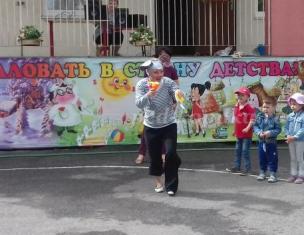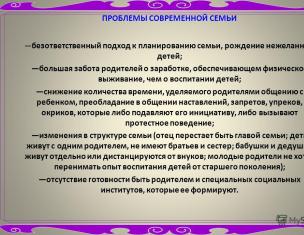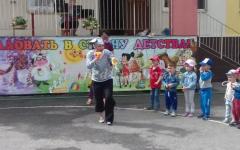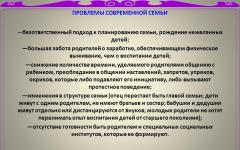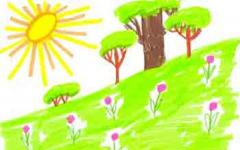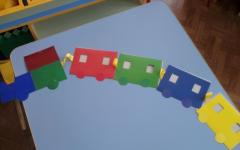Synopsis of GCD OO Cognitive development (Search and research activities) "Properties of air".
Description: the material is intended for employees of preschool institutions, for children of older preschool age.Helps children to learn the studied material, experimentation contributes to the formation of mental activity.
Target: the formation of a holistic perception of the world, the development of interest in the research and cognitive activities of children.
Program content:
Cognitive development:
To form knowledge about the properties of air, to develop in children the ability to establish cause-and-effect relationships based on an elementary experiment and draw conclusions; develop interest in research activities. Develop the ability to observe safety rules during the experiment.
Speech development:
Develop the ability to maintain a conversation, encourage the desire to express their point of view.
Artistic and aesthetic:
To form knowledge about non-traditional air painting techniques -
blotography.
Social and communicative development:
To cultivate independence, to bring the work begun to the end, to help each other.
Physical development:
Formation of motor activity at physical education sessions.
Preliminary work: Conversation: "Living and inanimate nature", looking at illustrations, observing the wind while walking.
Material: two balloons, plastic bags for each child, straws, plastic cups, pieces of foil, felt-tip pen or pen lids, jars with tight lids, watercolors, paper, white coats.
Lesson progress:
Educator: Guys, today guests came to our lesson. Let's say hello. (Children greeting)
Children stand in a circle:
Let's stand side by side, in a circle,
Let's say "Hello!" each other.
We are not too lazy to say hello:
Hi all!" and "Good afternoon!";
If everyone smiles -
Good morning will begin.
- GOOD MORNING!!!
Guys, today the postman brought a letter to our kindergarten, but for some reason it has no return address. Let's open it, maybe then we'll find out who it's from. Look, a sheet with a riddle, sent to us by our friends, the Fixies. Who are the Fixies!
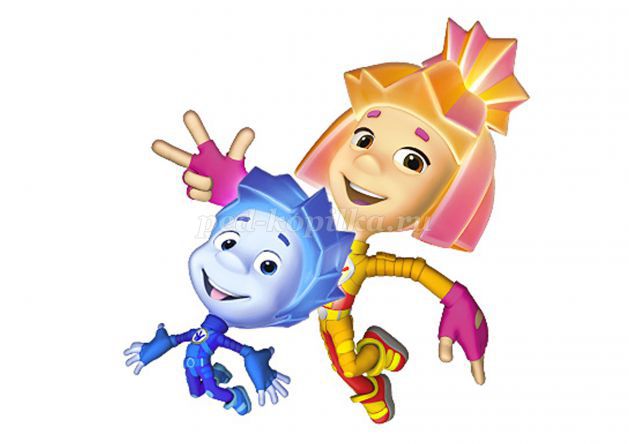
This is a family of little people who live inside the equipment and fix its breakdowns. Inside the letter is a riddle:
Passes through the nose to the chest
And then on the way back.
He's invisible, but still
We cannot live without it.
D: Air.
Q: Guys, I think we need to help our friends solve the mystery of the air.
To help us, the Fixies drew a diagram where they encrypted in the form of symbols that we should explore.
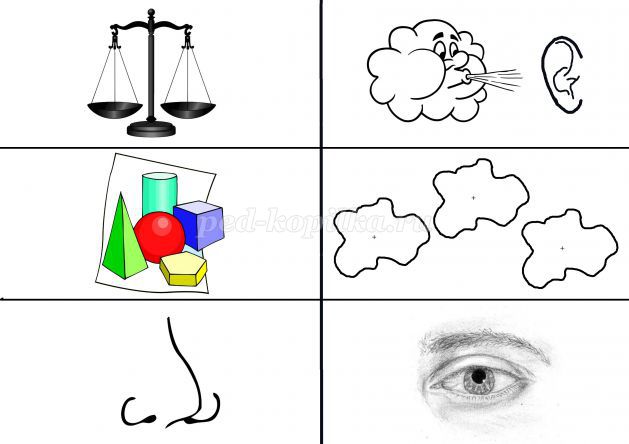
So let's talk about air today like real research scientists. Does anyone know, "Who are scientists?"
Scientists work in a room with a lot of different instruments, but what is the name of this room? Laboratory.
Q: Let's go to our laboratory for experiments.
To become a friend of nature
Know all her secrets
Unravel all mysteries
Learn to observe
Together we will develop quality - mindfulness,
And it will help you to know
Our observation.
(Saly).
Q: In the laboratory, certain rules must be observed: silence, work quietly, carefully, attentively.
And you need to wear special clothes (children and the teacher wear white coats).
Q: Today we will talk about air.
Q: Where is the air? And why do we need it. Children's answers.
Q: We breathe air and are used to not noticing it, but it is everywhere - on the street, indoors, in any free space. This can be verified.
The game "Divers" is being held.
B: Breathe in more air, pinch your nose with your fingers. Enough.
Exhale. It is difficult without air, which means that we breathe with the help of air.
Do we need air? Who else needs air?
(animals, plants, insects and all life on Earth).
So let's start our experiments.
Experiment No. 1 "How to catch air?"
Q: - Guys, can you tell me: “What kind of air?”. Answers.
Well then, to see the air, you need to catch it.
B: Take a plastic bag. See what's in it? (it's empty).
-B: Yes, it is empty, it can be folded several times. Look how thin he is. Now we draw air into the bag and twist it. What happened to the package? Indeed, he changed form, became full of air. Let's try to squeeze the package. Why doesn't it work? There is air in there. It filled the free space in the bag.
Can we see him? No. Does air have color? He is transparent.
The air filled the entire space of the package, which means that it takes the form of the object, the room where it is located.
Guys, do you think you can feel the air?
Let's check. With a sharp stick, carefully pierce the bag, bring it to your face and press it with your hands. What do you feel! A jet of air coming out of the bag. There was air inside.
Conclusion: Air is transparent, invisible, colorless, shapeless.
Q: Do you know how you can see the air? (children's answers)
Experiment No. 2 "How to see the air?"
Q: - Yes, guys, you are right, the air is transparent, and to see it, you have to catch it. And we were able to do it! We caught the air in the bag and released it. But I wonder if there is air inside us, what do you think? (answers).
Q: Let's check it out!
Q: - Let's take and blow into a tube, lowered into a glass of water, quietly, quietly. And let's see what happens.
Q: - What happens to the water?
D: Bubbles come out.
Q: - Bubbles? How did they get there? There is only water in the glass. (Answers).
Q: - I understood that the bubbles are the air that is inside us.
Conclusion: when we exhale a lot of air, there are many bubbles, when we exhale less air, there are few bubbles. With the help of a tube and a container of water, they saw the air.
Why do bubbles rise to the surface?
Because air is lighter than water.
Experiment #3 “Does air have weight? »
I pick up homemade scales, a stick with balloons, of the same shape, on the sides.
-What do I have in my hands? Scales.
These scales are homemade. I hung balloons on both sides. Look, now the scales are balanced.
I'll take a sharp stick and pierce one of the balls. What happened?
(A balloon with air descends, and a burst balloon rises up).
Conclusion:"Air has weight."
Fizminutka: "Soap bubbles."
I have a little surprise for you. (I take out soap bubbles). What is this? What do you think is inside the bubbles? Let's play a little.
I'll blow bubbles and you catch.
Now let's go to our lab. We are waiting for new discoveries.
Q: Can you hear the air? How can you hear it? (children's answers)
Experiment No. 4 "We hear the air"
Q: I have an inflated balloon on my table, what do you think you can do with this balloon to hear the air? Need to stretch the hole of the balloon and slowly release the air? What did we hear? Air came out of the ball, and touching the walls of the ball, he made a squeak sound.
Q: Now take a piece of foil and put it on your lips and blow along it so that you get a sound.
What's happening? We exhale a stream of air, so there is a sound.
And also, what helps us to hear the sound of air in nature? It's the wind
it vibrates the air and produces a sound (whistle, howl).
Wind is the movement of air.
Conclusion: Air can be heard in many ways. And when the wind blows, it drives the air.
Q: Can you smell the air? How? (children's answers)
Experiment No. 5 "Recognize by smell."
What is this? Jars.
Q: - Look, is there anything in them? (answers).
Q: - That's right, air. And now, I'll open the jars and go to you to smell, what does it smell like?
Q: - Indeed, it smells like an orange (onion, perfume).
Q: - Guys, let's check what is in the second jar.
Q: - What does the air in this jar smell like? (answers).
Q: Why do you think both jars are empty and smell differently (answers).
Q: - It turns out that the air does not have its own smell. Clean air doesn't smell. The smell is given to it by other substances that come into contact with it.
Q: The air itself is odorless, but it can carry odors. By the smell transferred from the kitchen, we guess what dish they cooked there.
Conclusion: The air has no smell.
Summing up. Examining the drawn table!
We mark the answer in the table.
- we do not see the air ("eye") - cross out
- air has weight ("scales")
- colorless air ("transparent blots")
- air can be heard ("ear")
- the air does not have a shape ("geometric shapes") - cross out.
- the air has no smell ("nose") - cross out.
Q: Our letter is ready, you can send it to little people.
So we did a lot of experiments today. Tell me, did you like experimenting? (children's answers)
And now I invite you to draw.
Q: Guys, do you know that you can draw with air? (children's answers)
This technique is called blotting.
Q: Would you like to try?
Q: Now we will try to draw with the help of air, paints and a tube.


